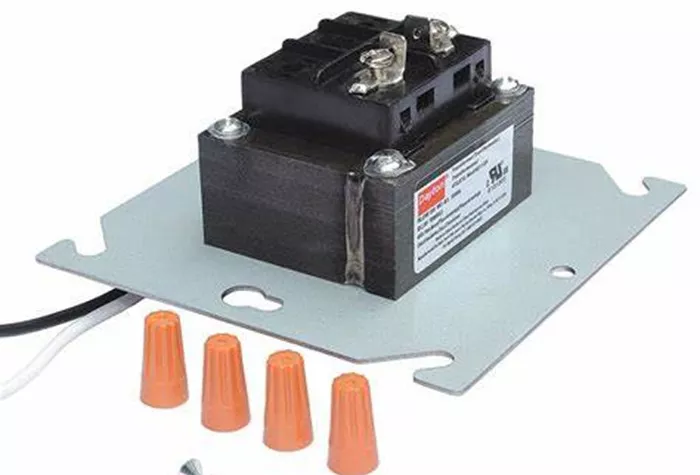Class 2 transformers are a specific type of electrical device that play a crucial role in numerous applications due to their unique characteristics and safety features. These transformers are designed to deliver a maximum of 100VA with an output voltage not exceeding 30VAC. Their low voltage and power output make them inherently safer, reducing the risk of electrical shock and fire hazards. This article will delve into the various applications, technical specifications, and benefits of Class 2 transformers.
Applications of Class 2 Transformers
Residential and Commercial Uses
Class 2 transformers are widely used in both residential and commercial settings. In homes, they power low-voltage lighting fixtures, doorbells, and garage door openers. These devices require a safe and reliable power source that Class 2 transformers can provide. For instance, a doorbell transformer converts the higher voltage from the home’s electrical system to a safer, lower voltage suitable for the doorbell. Similarly, in commercial buildings, Class 2 transformers are used in HVAC systems, air conditioning thermostats, and sprinkler system controls. These applications benefit from the transformers’ ability to provide isolated and controlled low-voltage power, ensuring safe and efficient operation.
Industrial Applications
In industrial settings, Class 2 transformers find use in a variety of control systems. They are employed in digital controllers, motor actuators, and staging controls. These applications often require precise voltage control and safety features to protect both equipment and personnel. For example, in food and beverage processing facilities, Class 2 transformers are used in convection ovens, conveyor ovens, and other processing appliances. These transformers help in safely altering voltage levels, ensuring that the equipment operates efficiently and safely.
Safety and Compliance
One of the primary reasons for the widespread use of Class 2 transformers is their safety features. They are designed to meet stringent safety standards, reducing the risk of electrical shock and fire. The low secondary voltage and limited power output make them inherently safer compared to other types of transformers. Additionally, Class 2 transformers often incorporate features such as double insulation or enhanced insulation, further enhancing their safety. These transformers are also tested for dielectric strength, ensuring they can withstand high voltage spikes without failure.
Technical Specifications
Class 2 transformers come in various configurations to meet different application needs. They typically have a power rating ranging from 1.1VA to 100VA. The input voltage can vary, but common options include 115VAC and 230VAC. The output voltage is usually limited to 12VAC or 24VAC. These transformers are designed to operate at frequencies of 50/60Hz. The core construction often includes laminated ferrite cores to ensure efficient operation and minimal noise. Some models also feature PTC (positive temperature coefficient) auto-resettable fuses to protect against overload conditions.
Benefits of Using Class 2 Transformers
The use of Class 2 transformers offers several benefits. Firstly, their low voltage output reduces the risk of electrical shock, making them safer for use in environments where people are present. Secondly, the limited power output minimizes the risk of fire, providing an additional layer of safety. Additionally, Class 2 transformers are often UL/CSA approved, ensuring they meet recognized safety standards. This approval reduces the time and cost associated with end-product agency submittals. Furthermore, the transformers’ design allows for multiple termination and mounting options, making them versatile and easy to integrate into various systems.
Customization and Flexibility
Class 2 transformers can be customized to meet specific application requirements. Manufacturers offer a range of options in terms of voltage, power rating, and physical dimensions. This flexibility allows engineers to select the most suitable transformer for their needs. For example, in applications requiring higher power output, transformers with higher VA ratings can be chosen. Similarly, for applications with specific voltage requirements, transformers with different output voltages are available.
Environmental Considerations
Class 2 transformers are designed to operate efficiently and have minimal environmental impact. They are often constructed with materials that can withstand high temperatures without degradation. This ensures that the transformers can operate reliably in various environmental conditions. Additionally, the use of double insulation or enhanced insulation reduces the risk of electrical leakage, further enhancing their environmental safety.
Future Trends and Developments
As technology advances, Class 2 transformers are likely to become even more efficient and versatile. Manufacturers are continuously working on improving the design and performance of these transformers. For example, new materials and manufacturing techniques may lead to transformers with higher efficiency and lower power losses. Additionally, the increasing demand for low-voltage applications in smart homes and buildings is driving the development of more advanced Class 2 transformers.
Conclusion
Class 2 transformers are essential components in a wide range of applications due to their safety features, versatility, and reliability. They are used in residential, commercial, and industrial settings to provide low-voltage power for various devices and systems. Their technical specifications and safety certifications make them ideal for applications where safety is a primary concern. As technology continues to evolve, Class 2 transformers will likely become even more efficient and capable, further expanding their range of applications. Whether in lighting systems, HVAC controls, or industrial equipment, Class 2 transformers play a crucial role in ensuring safe and efficient operation.
Related Topics:

